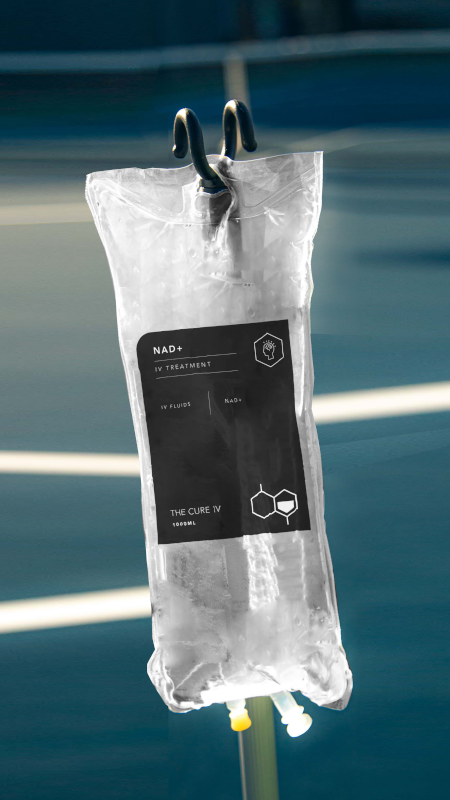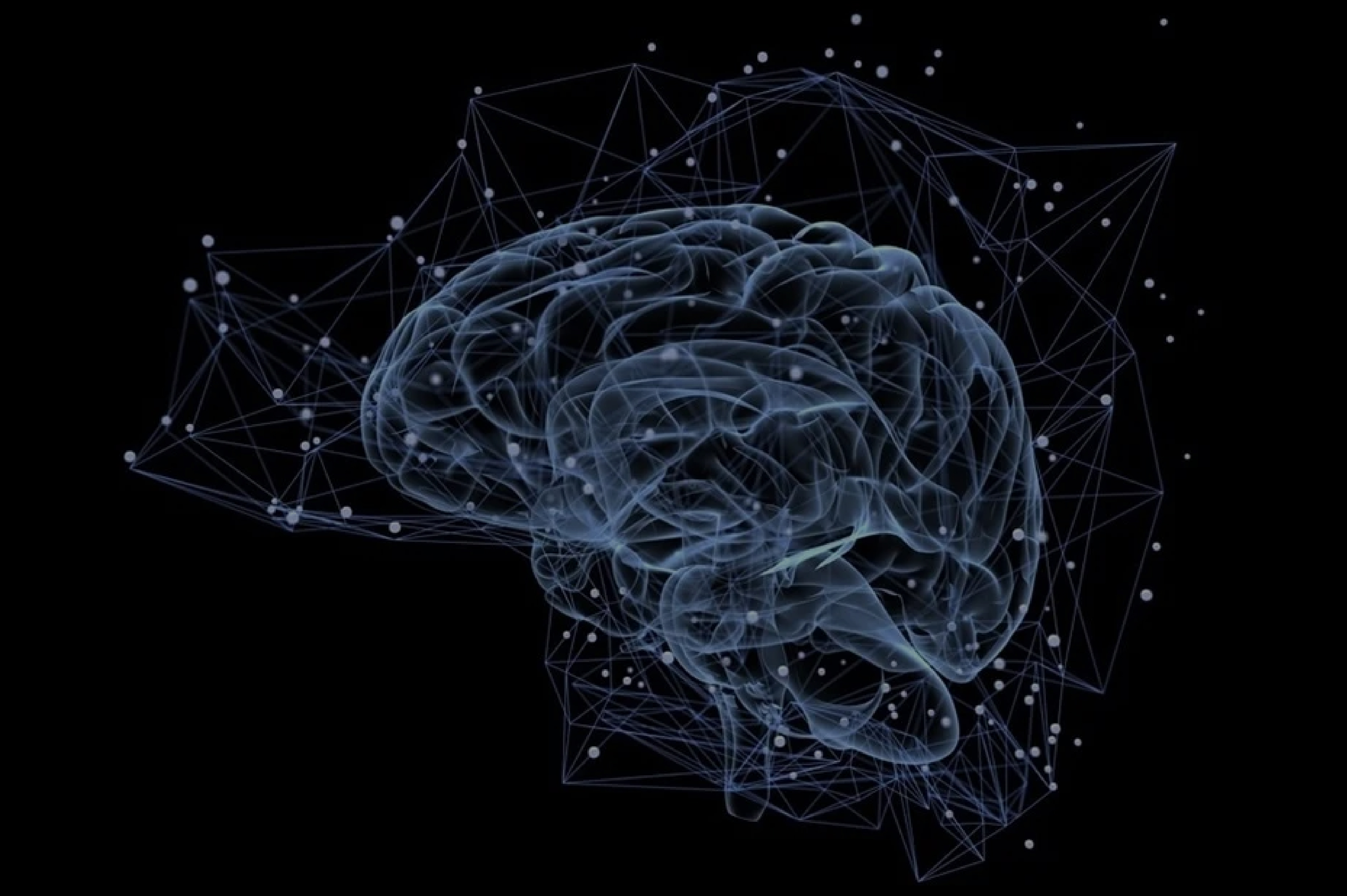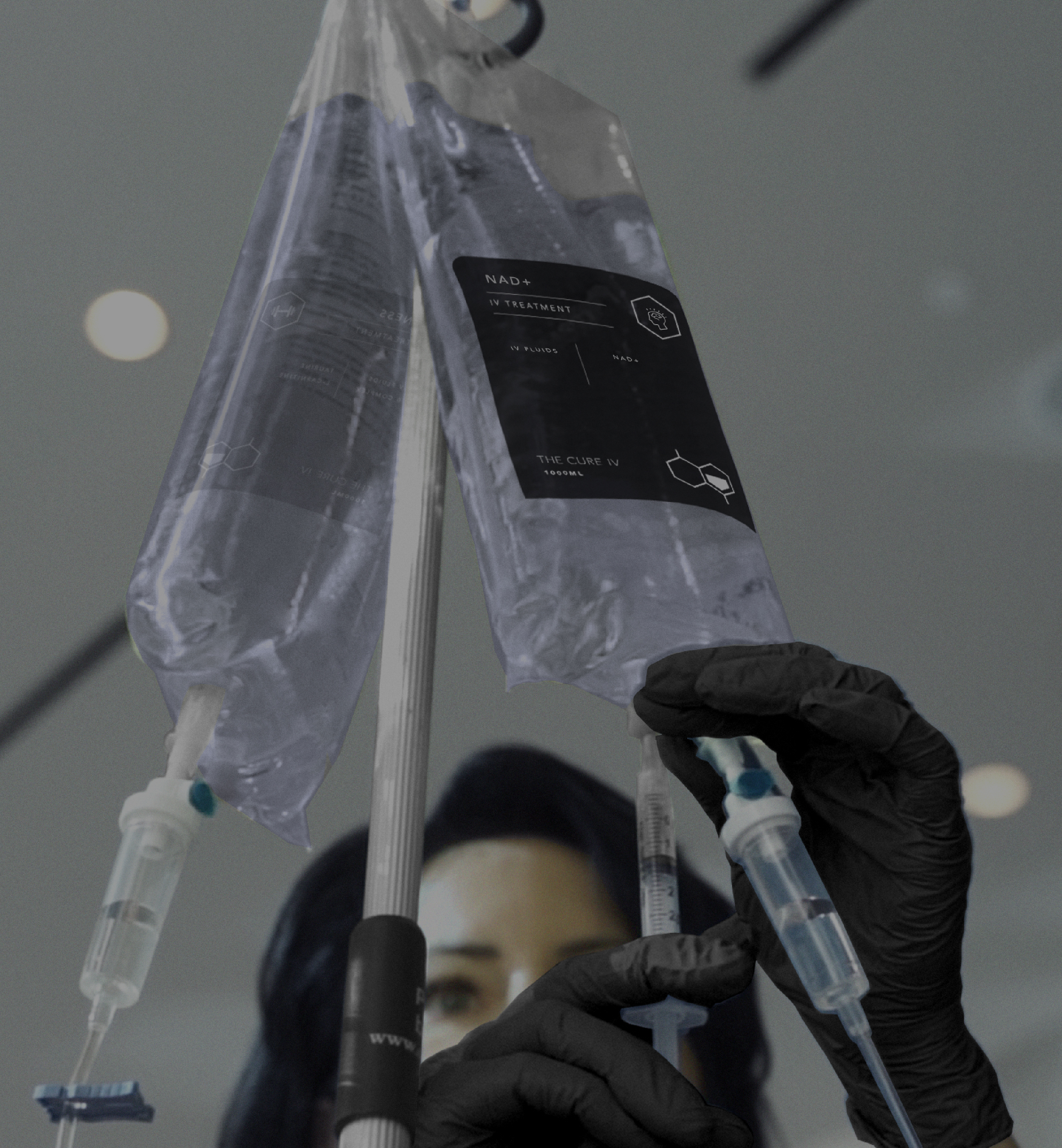Everything You Need to Know About NAD+ and NAD+ Therapy

NAD+1, an essential life molecule, is common to all known life forms, from unicellular organisms like bacteria to complex multicellular animals like humans. Dubbed an “anti-aging molecule” by leading scientists, this molecule offers many potential therapeutic opportunities by preserving DNA and ensuring healthy cell metabolism2.
Nicotinamide adenine dinucleotide (NAD+), a potent organic substance or coenzyme, is vital to how the mitochondria (cell powerhouses) performs its duties and plays a crucial role by aiding digestion, cell development, energy metabolism, and other vital processes.
So, If you value a healthy lifestyle, continue reading to learn why maintaining adequate NAD+ levels in the body is important and why IV NAD+ therapy is highly recommended.
Forms of NAD+
Discovered in 1906 by William John Young and Sir Arthur Harden, nicotinamide adenine dinucleotide exists in two forms, oxidized NAD+ and reduced NADH. Although some differences exist, NAD+ and NADH are two sides of the same coenzyme critical to many metabolic processes in the cell mitochondria.
The two NAD+ forms participate in a redox reaction, in which one form of NAD+ loses an electron (oxidation), and the other form obtains an electron (reduction). In this type of reaction, NADH transfers its obtained electron to the mitochondria, where it is used to produce ATP, the energy-carrying molecule in your cells. With one less electron, NADH is transformed back to NAD+, and the cycle begins again.


Role Of NAD+ in the Body
Due to its ability to bind to and stimulate the activity of other enzymes, NAD+ is classified as a “helper molecule.” Involved in nearly 500 enzymatic events, this potent molecule helps the body stay healthy and functional by supporting the following processes:
Reduces Genomic Instability
Genomic instability6 occurs when our DNA sustains damage and is unable to be repaired. It is proposed as one of the causes of accelerated aging and plays a key role in genetic mutations or cancer development.
NAD+ plays a vital role in decreasing the occurrence of genomic instability by aiding in damaged DNA repair and also fixing faults made during replication. This crucial role allows efficient transmission of genetic information from one generation to the next via germline cells.
Inflammation and Immunity
Research7 has shown that NAD+ levels in the body are directly related to the intensity and duration of an immunological response to infection. During an infection, macrophages benefit from elevated levels of NAD+ because it enhances their ability to neutralize the invading pathogen.
Crucial in Energy Metabolism
Human cells need energy and if NAD+ levels are low, the body’s ability to make and use energy is hindered. The reactions(Glycolysis, Krebs cycle, oxidative phosphorylation, and fatty acid oxidation) by which the body produces and utilizes energy all depend on NAD+ and low amounts of this cofactor interferes with energy metabolism.
Gene Expression
Genetic expression refers to the process by which the instructions contained in the DNA of cells are translated into the proteins and other substances that the body needs. The successful expression of genes is achieved through NAD+-dependent modification of histone9. Since NAD+ is required for this reaction, low amounts of this cofactor may interfere with this process and, in turn, reduce the efficiency with which genes are expressed.
Cardiovascular Function
Due to its continual contraction and expansion, the heart is the body’s most metabolically active organ. Heart metabolic activity must be kept at a healthy state at all times, and studies have shown that appropriate levels of NAD+10 are crucial in maintaining healthy levels and healing after a severe heart disease.
Improves Renal Function
It is widely known that renal function declines with age, and diminishing NAD+ levels may have a part to play. Studies11 have shown that supplementing with NAD+ can help reduce the risk of acute renal damage by triggering the production of prostaglandin E2. This prostaglandin E2 production aids in repair of kidney damage and improves renal function.
Crucial in Liver Function
Maintaining healthy levels of NAD+ in the body is crucial for the liver to do its job properly. Several studies suggest supplementing with NAD+ can improve liver function, protect it against toxic diseases, and speed up recovery after hepatic damage.
Important in the Circadian Rhythm
The circadian clock controls the sleep-wake cycle, called the biological clock or the circadian rhythm. The body’s internal clock facilitates adaptation to seasonal or diurnal changes. Studies12 show that NAD+ levels in cells determine circadian clock precision and performance.
Also, according to studies, sleepiness during the day, insomnia at night, hormone disruptions, and mental state changes are some potential side effects of a deficit of NAD+. This study highlights how low NAD+ levels disturb the body’s natural circadian cycle.
Improves Neurological Function
Maintaining enough NAD+ levels is crucial for the health and survival of brain cells. This was reinforced by studies that showed that after a severe neurological event, NAD+ was important in regenerating the brain’s neurons.
NAD+ decreases the progression of neurodegenerative disorders by enhancing the body’s natural capacity to repair damaged cells. Also, If NAD+ levels are increased, it leads to the accumulation of proteins that help with cellular communication and improved cognitive function.
How do NAD+ Levels Drop in the Body
NAD+ is produced naturally by our bodies; however, the available levels vary depending on the individual’s state of health. There is mounting evidence linking low NAD+ levels to a wide range of illnesses and physiological stressors.
Natural occurring aetiological causes of decline in NAD+ include:
- Aging,
- Stress,
- Environmental factors
The following factors can also bring on NAD+ depletion:
Excessive Alcohol Intake
To metabolize alcohol intake, the body uses NAD+ to produce acetaldehyde, a toxic substance that triggers hangovers and alcohol-related malignancies. Therefore heavy drinking reduces NAD+ levels and has been linked to liver damage and other harmful consequences.
Impaired Circadian System
According to studies12, oxidative stress is higher in people who sleep less than those who sleep longer at night. It is believed that suppressing melatonin through nighttime activities like staying up and working contributes to low levels of NAD+.

Obesity
Obesity has been shown in several studies13 to lower NAD+ levels. Cortisol, glucose, and insulin levels all rise in response to overeating, triggering weight gain and inflammation, which leads to the depletion of NAD+ levels.
Also, fatty liver, a disease where fat is deposited in the liver, has been linked to decreasing NAD+ levels in aging.
Diabetes
NAD+ levels are known to be lowered in people with diabetes, both type 1 and type 2. Although the precise process is unclear, increased NAD+ usage for DNA repair seems responsible for the decline.
Effects of Low NAD+ Levels
A deficiency in NAD+14, or a disruption in NAD+ homeostasis in the body, may impair healthy physiologic processes, resulting in different illnesses or disease conditions. Low NAD+ levels can be linked with some health problems like
- Fatigue
- Hypoxia
- Weight gain
- Cardiovascular diseases
- Multiple sclerosis
- Oxidative stress
- Decreased brain function
- Sunburn and skin damage
- An accelerated rate of aging
- Dermatitis
- Dementia
- Diarrhea

What is NAD+ IV Therapy?
Nicotinamide adenine dinucleotide (NAD+) IV therapy is a treatment that utilizes the coenzyme NAD+ present in all living cells to treat various conditions, including accelerated aging, poor health, poor sports performance, and poor cognitive function. At the cellular level, it interacts with DNA to supply each cell with everything it needs to thrive.
Intravenous NAD+ therapy is a supplement that can help replenish depleted stores of this vital coenzyme. A concentrated amount of NAD+ is dissolved in a specific saline solution and injected into your circulation. The drug bypasses first-pass metabolism by being injected straight into the blood, and all of it is absorbed quickly and efficiently without producing any byproducts.

Who Needs IV NAD+ Therapy?
Who and how often one needs NAD+ treatments will vary depending on their specific health situation. Patients with significant exhaustion, for instance, may need therapy once or twice weekly until their energy levels are recovered.
The positive effects of intravenous NAD+ are available anytime, not only while you’re sick. However, IV NAD+ therapy is recommended if you have the following.
- Aging
- Fatigue
- Weight loss problems
- Low cognitive functioning
- Anxiety and Depression
- Sunburn and skin damage
- Dermatitis
- Dementia
- Diarrhea

Benefits of NAD+ IV Therapy
Since NAD+ participates in every significant physiological activity, maintaining optimal levels of this molecule is crucial. Benefits from intravenous NAD+ are not limited to times of illness. The following are some of the advantages that this multimodal therapy provides:
Given the integral role that NAD+ plays in all the body’s major processes, it is essential to ensure that NAD+ levels are optimal. This multifaceted therapy boosts overall health and offers the following benefits15.
Augments Addiction Therapy
Some people may be candidates for intravenous NAD+ therapy for addiction treatment. Patients detoxing from opiates, alcohol, chemicals, or prescription drugs may benefit from receiving NAD+ by intravenous infusion, which may help lessen the intensity of withdrawal symptoms.
Relieves Chronic Fatigue
Patients with persistent exhaustion and lack of vitality have been helped by intravenous NAD+ treatment. Increasing ATP levels in the body with exogenous NAD+ supplementation may positively affect energy levels and decrease chronic tiredness.
Decreases Rapid Aging
Restoring and supplementing NAD+ in the body helps improve one’s looks, health, and quality of life by preserving DNA, which might otherwise deteriorate with age due to mechanical stress, faulty replication, or free radical damage.
Enhances Weight Control
When NAD+ levels are restored intravenously, they accelerate the conversion of food into energy, which is subsequently recycled to burn calories, resulting in measurable weight reduction. Also, increasing our resting metabolism through NAD+ is important for keeping fat stores low after a major weight reduction.
Keeping your NAD+ levels in check helps you avoid metabolic disorders contributing to weight gain and destroying your health.
Improves Cognitive Function
How exactly exogenous NAD+ supplementation improves cognitive function is still being researched; however, It has been established that NAD+ has a dual role in the brain, providing both neuroprotection and neurogenesis. IV NAD+ treatment boosts cognitive abilities, including learning, remembering, focusing, and regenerating the brain, as well as general neurological health.
Alleviates Pain
Some people use intravenous NAD+ therapy to alleviate pain, a relatively innovative treatment. Since inflammation is often associated with pain, NAD+, which is known to exert considerable anti-inflammatory activities inside the body, may be utilized to alleviate at least part of the pain experienced by patients.
Improves Mood
When someone is worried or depressed, taking supplemental IV NAD+ therapy can help them create normal quantities of “feel good” neurochemicals in the brain. The brain uses NAD+ to generate mood-regulating neurotransmitters like serotonin, which can improve one’s disposition and reduce the impact of depressive and anxious feelings.
Enhances Athletic Performance
Athletes may benefit from IV NAD+ supplementation in energy, cognition, and response time during games and other sporting activities. In addition, research suggests that NAD+ supplementation can help build muscle and repair damaged muscle, resulting in muscular hypertrophy and muscle hyperplasia.
What NAD+ Treatment is Right for Me?
NAD+ is generally recommended for everyone and can provide great results.
If this is your first time receiving NAD+ or if you haven’t received a treatment in awhile the general recommended protocol is:
Initial treatments:
- 2,000 mg total broken up into 4 sessions of 500 mg each.
- Each session takes on average 2-3 hours for infusion.
- The first 4 sessions should be completed within 7-10 days.
Follow up treatments:
- Once the initial protocol is complete the frequency and dosage of your follow up infusions will depend on lifestyle factors and goals of treatment.
- The most common frequencies of treatment are once every other month, once a month and once a week.
Exceptions:
- Some may not tolerate infusions as well as others, or may need to follow a protocol at slower rate and frequency.
- Patients over the age of 65 may be required to receive approval from their primary care physician or specialty doctor, depending on medical history.
Recommendations and Tips for Infusions:
Prior to Infusion:
- Eating a light digestible meal. Eating too much or too little beforehand may increase uncomfortable symptoms during infusion.
- Avoiding alcohol consumption 24 hours prior to treatment is recommended for the best experience.
During the Infusion:
- Keeping legs elevated and choosing a comfortable spot will maximize comfortability. Make sure to chose a nice set up with pillows or a blanket.
- Although you may work during your infusion, we recommend doing something relaxing like watching your favorite TV show or reading.
Post Treatment Tips and Tricks
- Wait 1-2 hours after your infusion to workout since NAD+ is a vasodilator.
- You do not need to wait to eat a meal.
- It’s common for patients to have difficulty sleeping after infusions and sleep less hours. However they also report feeling more rested in spite of the sleep issues.
- For a better night’s sleep post infusion try the following:
– No screens 2-3 hours before bed. Screens emit blue light which keeps you up.
– Take a Melatonin before bed. Melatonin is an over the counter sleep aid.
– Incorporate something relaxing into your bedtime routine such as taking a bath, drinking tea or reading book.
How Soon will I Start to Notice Benefits?
- Results may vary from immediately after your 1st infusion to after your 4th. Many notice the largest difference after their last infusion of their protocol.
Are There any Side Effects?
- Some experience no symptoms at all.
- Some experience symptoms like nasal congestion, headache, butterflies in the stomach, nausea, or a “weighted blanket” feeling.
- During infusion experiencing one or more of these symptoms is common, but our nurses are trained to make sure that it is given at a rate that alleviates these symptoms or resolves them completely.
Please contact us to speak to one of our Nurse Practitioners if you have any further questions.

Key Takeaway
Multiple essential bodily functions depend on NAD+ and would grind to a halt if NAD+ production were to cease. NAD+ promotes healthy senescence, aids in the repair of damaged DNA, increases cellular resistance to stress while shielding brain tissue, and regulates our eating and sleeping habits to meet our physiological demands.
When levels of NAD+ are low, the best approach to guarantee total bioavailability of NAD+ is by intravenous infusion. This implies that your body will be able to take in and use the maximum effective dose of supplementary coenzymes. The anti-aging, immune-boosting, and metabolism-boosting effects of IV NAD+ therapy make it a top choice for replenishing low levels of NAD+.
References:
[1] NCBI: https://www.ncbi.nlm.nih.gov/pmc/articles/PMC7752291/ [2] Cell Metabolism: https://www.cell.com/cell-metabolism/fulltext/S1550-4131(12)00192-1 [3] NCBI: https://www.ncbi.nlm.nih.gov/pmc/articles/PMC7053056 [4] Science Direct: https://www.sciencedirect.com/science/article/abs/pii/S1043661816311434 [5] Research Gate: https://www.researchgate.net/figure/NAD-is-synthesized-through-de-novo-Preiss-Handler-and-salvage-pathways-NAM_fig2_333027019 [6] Pubmed: https://pubmed.ncbi.nlm.nih.gov/31779194 [7] NCBI: https://www.ncbi.nlm.nih.gov/pmc/articles/PMC8082456/ [8] Pubmed: https://pubmed.ncbi.nlm.nih.gov/33353981 [9] Pubmed: https://pubmed.ncbi.nlm.nih.gov/29309893/ [10] Pubmed: https://pubmed.ncbi.nlm.nih.gov/33485900 [11] Pubmed: https://pubmed.ncbi.nlm.nih.gov/33099633/ [12] Pubmed: https://pubmed.ncbi.nlm.nih.gov/32369735/ [13] NCBI: https://www.ncbi.nlm.nih.gov/pmc/articles/PMC5469033 [14] Pubmed: https://pubmed.ncbi.nlm.nih.gov/29295624/ [15] NCBI: https://www.ncbi.nlm.nih.gov/pmc/articles/PMC7558103/


